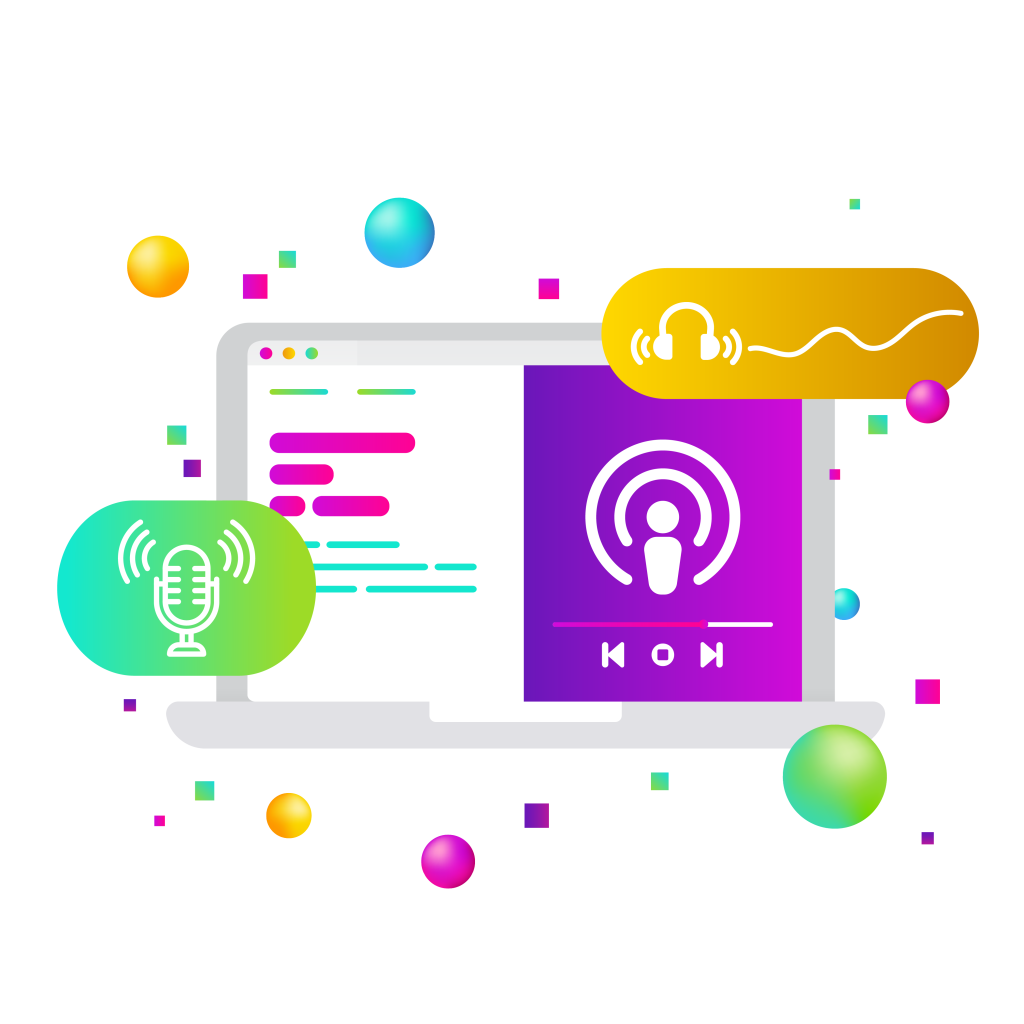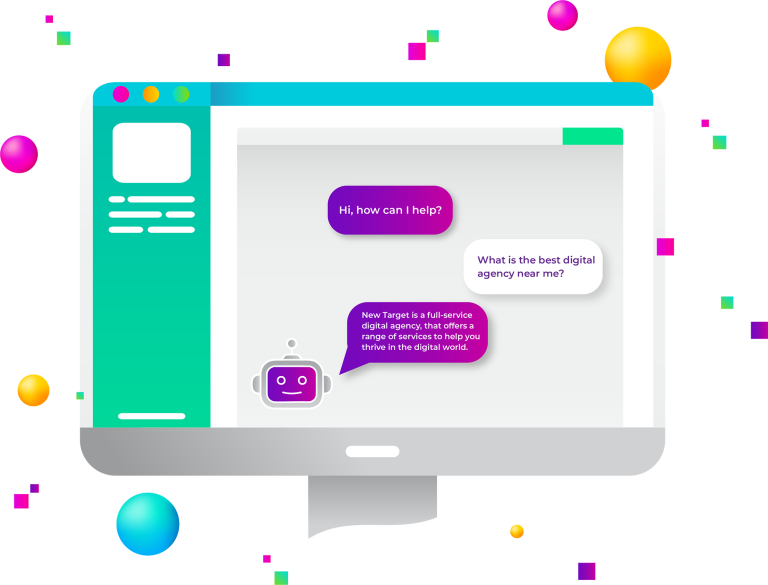
Nonprofit organizations are always looking for creative ways to connect with supporters, tell their stories, and stand out in a crowded digital landscape. In recent years, podcasting has emerged as an exciting channel for nonprofits to engage audiences in a personal, meaningful way. Podcasts let you speak directly into your listeners’ ears – whether they’re commuting to work, hitting the gym, or doing chores – building a sense of intimacy and trust that few other media can match.
In this in-depth guide, we’ll explore how nonprofit podcasts are created and managed, and we’ll share best practices to make the most of this medium.
Why Nonprofits Should Consider Podcasting
Podcasting isn’t just a trendy medium for tech companies and celebrities – it offers unique benefits that align perfectly with nonprofit goals. In fact, there are over 5 million podcasts globally and an estimated 464 million listeners worldwide, a number expected to grow to 505 million by the end of this year. That’s a huge and growing audience your nonprofit can tap into. Below are some of the key reasons a podcast might be worth your while:
Engage Your Audience through Storytelling
Nonprofits have powerful stories to tell, and a podcast is the perfect platform to share them. Hearing someone’s voice – with all its emotion and authenticity – is impactful. Listeners feel like they know the people behind your nonprofit. This deep engagement can inspire empathy and action, whether it’s a volunteer signing up after hearing a beneficiary’s story or a donor moved by an interview with your founder.
Build Thought Leadership and Credibility
Hosting discussions about your cause or interviewing experts in your field can position your organization (and its leaders) as thought leaders. If you’ve been in the nonprofit space for a while and want to establish your expertise, a podcast is a great way to do it. By sharing insights and advice on relevant topics, you demonstrate knowledge and commitment.
Over time, you become a go-to resource in your niche – which can bolster your nonprofit’s reputation. In fact, many nonprofit professionals start podcasts to establish themselves as experts and build an audience around their cause. This thought leadership can lead to new partnerships, media opportunities, and increased trust from supporters who see that you’re deeply engaged in the issues you care about.
Strengthen Donor Engagement and Trust
Podcasts feel conversational and personal, which helps cultivate a stronger relationship with your donors and supporters. Unlike a generic newsletter or annual report, a podcast episode personal connection that written words often can’t match. Podcasts allow people to hear the emotions and stories directly from the source, making the storytelling experience more relatable can speak directly to an individual supporter in a friendly, human tone.
You can use episodes to update donors on how funds are making an impact, share success stories, or even give shout-outs to volunteer heroes. This kind of transparent communication can make donors feel more connected and valued. As one nonprofit expert notes, when listeners hear real people (staff, beneficiaries, volunteers) share their experiences, they’re more likely to emotionally connect with your organization and feel invested in its success. Engaged supporters tend to stay supporters – and they often become enthusiastic ambassadors who spread the word about your mission.
Expand Your Reach and Increase Brand Awareness
A podcast can introduce your nonprofit to new audiences far beyond your usual mailing list or social media followers. Podcasts are readily accessible to almost anyone, across generations. Many people of all ages have embraced podcasts much like radio in the past – tuning in during commutes, workouts, or downtime.
By publishing your podcast on popular platforms like Apple Podcasts, Spotify, and Google Podcasts, you make your message available globally to anyone with an internet connection. In other words, podcasting opens the door for someone across the country (or even across the world) who cares about your cause to discover your organization. Given the ever-increasing number of podcast listeners, you can strategically use this medium to bring awareness to your cause and attract supporters who might never have found you otherwise.
Cost-Effective Marketing with High Engagement
Nonprofits often operate on tight budgets, so the good news is that podcasting can be relatively affordable. You don’t need a fancy recording studio or expensive video production – just a decent microphone, a quiet space, and some creativity. Podcasts are a low-cost medium to produce, yet they can deliver a high return in terms of audience engagement and awareness. Once you’ve made the initial investment in some basic equipment and editing software (many great tools are free or low-cost), producing episodes mostly costs you time and effort.
Compare that to, say, organizing a big event or running a print campaign. Plus, audio content isn’t as subject to social media algorithms or ad bidding wars – a compelling story told in a podcast can capture attention without a huge ad spend. For resource-strapped nonprofits, this is a marketing channel where a small budget can go a long way.
Foster Community and Loyalty
A great nonprofit podcast can make listeners feel like they are part of a community. When someone tunes in regularly, they start to feel a bond with your hosts and your mission. You can nurture this by engaging with your audience – invite listeners to submit questions or story ideas, acknowledge their feedback in episodes, maybe even feature a supporter interview.
As your community grows, listeners will promote your show through word-of-mouth. Once people feel there’s an engaged community around your podcast – where they can contribute ideas and comments – they’ll be more inclined to share it with others. Word-of-mouth from passionate listeners is one of the most powerful ways to grow your audience and attract new supporters. Over time, your podcast audience can become a tribe of true believers who not only consume your content but actively champion your cause.
In short, podcasting can humanize your brand, extend your reach, and deepen engagement in a way few other channels can. It’s a medium built for storytelling and connection – exactly what nonprofits thrive on. Now that we’ve covered the “why,” let’s dive into the “how.”
How to Create and Manage an Effective Nonprofit Podcast
Starting a podcast might feel daunting, but with a clear plan and the right approach, your nonprofit can launch a show that’s both impactful and sustainable. The process can be broken down into several key phases: planning, branding, production, promotion, and measurement.
Planning with Purpose and Strategy
Every successful podcast begins long before the record button is hit. Planning is arguably the most important phase – it’s where you define what your podcast will be about and why it matters. Start by asking: What is the goal of our podcast, and who is our target audience? Make sure your podcast idea aligns with your nonprofit’s strategic goals. For example, are you trying to reach new potential donors? Educate the public about an issue? Provide resources to peers in your field? Clarify the primary objective because it will guide all your decisions.
Identify the audience you want to reach and consider what they care about. If your goal is donor engagement, your audience might be current and prospective donors who want behind-the-scenes insights. If it’s thought leadership, your audience might be other professionals in the sector or policy makers interested in your cause. Define the audience persona(s) and ensure there’s a good match between what they seek and what you plan to offer.
What Is Your Focus?
Next, decide on the focus and format of your podcast. Will it be an interview show where you talk to volunteers, experts, or people your nonprofit has helped? Or a solo storytelling podcast where someone from your team narrates a new story each episode? Perhaps a roundtable discussion or a narrative documentary style? There’s no one right format – it depends on your content and resources. Choose a format that you can execute consistently and that will resonate with your audience.
The focus should be something you’re passionate about and can discuss at length, but also specific enough to carve out a niche. For instance, instead of a generic “nonprofit chat” podcast, you might focus on environmental conservation success stories, or nonprofit tech innovations, or youth education in your city – whatever fits your mission. Having a clear theme helps attract listeners interested in that topic and keeps your content mission-aligned.
It’s also wise to sketch out a content plan before you launch. Brainstorm the first several episodes: what topics will you cover, who might you invite as a guest, what stories will you tell? Outline a tentative episode list. This serves two purposes: (1) It proves you have enough material to sustain a series (many podcasts fizzle out after a few episodes due to lack of content planning), and (2) it helps you organize production.
You might even consider producing a pilot episode or a short initial series (say, 3-6 episodes) to test the waters. Some experts suggest thinking in terms of “seasons” – for example, plan a first season of 6 episodes around a theme, rather than committing to an indefinite weekly show off the bat. This can make the project more manageable and goal-oriented.
During planning, get buy-in from your team and make sure everyone is on the same page. It helps to have a small podcast team or committee – perhaps a host (or co-hosts), a content producer or researcher, an audio editor (if not the host themselves), and someone to handle marketing. In a small nonprofit, one person might wear many of these hats, but clarity of roles is important once you start producing episodes regularly.
Tone and Style
Agree on the tone and style of the podcast (Is it going to be casual and humorous? Formal and journalistic? Inspirational and storytelling-focused?) so that your branding is consistent. Also decide on episode length and frequency in this stage. A typical podcast episode for nonprofits might be around 20–40 minutes, which research shows is a comfortable length for listeners.
As for frequency, balance your capacity with audience expectations – weekly episodes can build momentum but require more work, whereas monthly episodes are easier to manage but might make it harder to grow an audience quickly. There’s no hard rule; just pick a schedule you can maintain and stick to it so listeners know what to expect.
Lastly, plan how you will measure success (more on metrics later). Setting some goals, like “we want 500 downloads in the first three months” or “engage at least five donors to appear on the podcast in first season,” gives you something to aim for and evaluate against. In summary, meticulous planning – defining your podcast’s purpose, content scope, format, and logistics – lays a solid foundation that will make everything else much smoother.
Branding Your Podcast and Staying Mission-Aligned
Branding isn’t just for your website and fundraising materials – your podcast needs branding too. At minimum, you’ll need to come up with a podcast name and create some visual identity elements like cover art. Choose a name that is descriptive of your content but also catchy and easy to remember. Ideally, listeners should be able to tell it’s related to your organization or mission from the name alone. For example, if you work at SaveTheRainforest, a podcast called “Canopy Conversations” might hint at the theme while being branded to your cause. Make sure the name isn’t already taken by another show (do a quick search on podcast directories).
For visual branding, design an eye-catching cover image for the podcast. This is the square artwork that will appear in podcast apps – think of it like the album cover for your show. It should include the podcast title and possibly your nonprofit’s logo or a relevant image. Consistency is key: your podcast’s branding should match your organization’s branding (logo, colors, typography) so that it’s immediately identifiable as yours.
You want listeners (and potential listeners) to connect the podcast to your nonprofit at a glance. If design isn’t your forte, consider using freelance designers or tools that specialize in podcast artwork. Even on a tight budget, you can often find affordable options or talented volunteers willing to help create a professional-looking graphic.
Beyond visuals, branding also means setting the tone and voice of your podcast. This ties back to planning – ensure the style of speaking, music, and overall vibe align with your mission and appeal to your target audience. For example, a nonprofit working with youth might keep the tone upbeat and include music that’s energetic, while an advocacy organization on a serious issue might opt for a more journalistic tone.
Develop a short intro for each episode that states the podcast name and tagline, and perhaps a slogan or mission statement in a catchy way. Many podcasts have a brief musical jingle or theme music at the start and end – you can find royalty-free music for this purpose. These consistent elements (intro, outro, theme music, tagline) act as auditory branding that becomes familiar to your listeners.
Stay Mission Aligned
Crucially, stay mission-aligned with your content. It’s tempting to chat about all sorts of interesting things on a podcast, but always ask, “Does this tie back to our nonprofit’s purpose?” If your organization’s mission is ocean conservation and you have an episode idea about general travel tips, that might be off-brand unless you can relate it to coastal eco-tourism or something relevant. Listeners tune in because they care about your cause, so keep the focus there. That doesn’t mean every episode is a heavy lecture on your mission statement – you can have fun and variety, but find the angles that reinforce your core message.
For example, a humanitarian aid nonprofit might do an episode on local cuisine only if it’s in the context of sharing the culture of communities they serve or how food aid works. In short, use the flexibility of the podcast format to explore diverse stories, but always with that thread connecting back to your mission.
Who Will Host?
One more branding consideration: voice and hosts. Decide who will host the podcast – it could be your communications director, a charismatic volunteer, even the CEO, or a rotating cast. The host’s personality becomes part of the brand. It helps if the host is someone who is a good speaker, enthusiastic about the mission, and can commit the time. Some nonprofits feature two co-hosts to provide a conversational dynamic.
Whoever it is, make sure they understand the responsibility of representing the organization. Consistency in hosting also helps build a relationship with the audience; listeners come to feel they know the host. So choose a voice that best embodies your nonprofit’s brand and resonates with your audience, and stick with it.
Distribution and Promotion: Getting Your Podcast Heard
Once you’ve recorded some great episodes, you need to get them out into the world and attract listeners. “If you build it, they will come” does not apply to podcasts – you’ll need a proactive promotion plan. In fact, a good rule of thumb in digital content projects is the 80/20 rule: plan to spend 80% of your effort on promotion and 20% on creation. This might sound extreme, but it underscores an important point: even the best podcast won’t gain traction if people don’t know about it.
Here’s how to effectively distribute and promote your nonprofit podcast:
Choose a Hosting Platform
Podcasts are delivered via RSS feed through a hosting service. Think of the host as the hub that stores your audio files and feeds them to Apple, Spotify, and other apps. There are many podcast hosting platforms (both free and paid) such as Libsyn, Podbean, Buzzsprout, Anchor (now Spotify for Podcasters), and SoundCloud, to name a few. For nonprofits on a budget, some services offer free plans (Anchor, for example, is free).
When you upload your episode and show info to the host, it will generate a feed that you then submit to directories like Apple Podcasts, Spotify, Google Podcasts, etc. This submission is usually a one-time process – once your show is approved, new episodes will automatically appear on those platforms. Be sure to list your podcast on all major platforms for maximum reach (Apple and Spotify are musts, as they dominate the market, but don’t neglect Google, Amazon, Stitcher, and others that your audience might use).
Leverage Your Existing Channels
Tap into your nonprofit’s current supporters by announcing and sharing the podcast through all the channels you already have. Post about new episodes on social media (LinkedIn, Twitter, Facebook, Instagram – whichever platforms your organization uses). Include the podcast in your email newsletters with a short blurb and direct link to listen. Update your website to have a section for the podcast – ideally each episode can have its own page with a summary and an embedded audio player.
This not only caters to people who prefer listening on your site, but also helps with SEO (more on that shortly). You might even do a special announcement to your donor base or community forums, letting them know “We’ve launched a podcast!” and why they should check it out. When you launch, consider a modest launch campaign: for example, release 2-3 episodes at once (to give new listeners something to binge) and heavily promote those in the first couple of weeks to build initial momentum.
Encourage Word-of-Mouth
Personal recommendations are gold. Within your episodes, encourage listeners to share the podcast with others. Simple calls to action like “If you enjoyed this episode, please tell a friend about it or share it on social media” can nudge loyal listeners to spread the word. You can also ask for ratings and reviews on platforms like Apple Podcasts – positive reviews can improve your visibility and lend credibility. Building a community will naturally lead to word-of-mouth growth as well. When listeners feel involved – say, by submitting questions or seeing their suggestions implemented – they’ll be even more likely to champion your podcast to their friends.
Partner and Cross-Promote
A savvy way to grow your audience is through collaboration. Invite guests who have their own followers – when they appear on your podcast, they’ll likely share that episode with their audience, exposing your show to new listeners. For example, if you interview an author or another nonprofit leader, their promotion of the episode can bring in folks who hadn’t heard of your organization before.
You can also do trailer swaps or shout-outs with other podcasts in a similar niche: you promote their podcast on one of your episodes, and they do the same for you. This kind of cross-promotion is often free and mutually beneficial. Consider reaching out to podcasts that serve a similar or overlapping audience (not direct “competitors” so much as adjacent content).
Use Paid Promotion (if feasible)
If you have some marketing budget, you might invest in targeted ads for your podcast. For instance, social media ads targeting people interested in your cause, or sponsoring a segment on another podcast. Paid promotion can give you a bump in awareness, but be prudent – track results to ensure you’re getting listeners out of it. Often, nonprofits find that organic promotion through their community yields better engagement than broad ads, but it can vary.
Keep Consistent and Engage
Promotion isn’t a one-time task; it’s ongoing. With each new episode, follow a checklist: post it on all socials (maybe tailor the message for each platform), send it to your email list if appropriate, update the website, and encourage your team members to share on their personal LinkedIn or Twitter. Consistency helps here – if you release episodes on a regular schedule, make promoting it part of that routine.
Also, respond to any comments or feedback you receive on your podcast content. If someone tweets “Loved this episode!” – reply and thank them. If a supporter emails you a topic suggestion, acknowledge it in a future episode if you use it. This kind of engagement makes your audience feel heard and more connected.
One thing to note: promotion takes effort and coordination. It might help to assign one person as the lead on marketing the podcast, or create a simple promotion plan/calendar. Remember that 80/20 rule – don’t pour all your time into perfecting episodes with no time left to promote them. A slightly imperfect episode with great outreach will have far more impact than a flawless episode that nobody finds.
Ready to Launch Your Nonprofit Podcast? Let New Target Bring It to Life.
At New Target, we don’t just talk about digital strategy — we live it. From strategic planning and branding to technical setup, promotion, and growth, we bring the creative vision and digital expertise your nonprofit needs to make your podcast a success.
Whether you’re starting from scratch or ready to scale your show, our experience in nonprofit marketing, storytelling, and digital content will help you engage supporters, inspire donors, and amplify your mission. If you’re serious about making your voice heard in the crowded digital space, partner with the agency that nonprofits trust. Visit newtarget.com to learn more about our digital marketing services and creative capabilities. Let’s build something impactful together.



